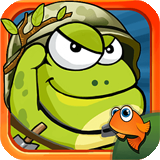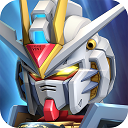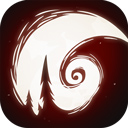
🈁五五世纪首页🈂
五五世纪首页在山西省临汾市尧都区的吴村湿地,河水潺潺,候鸟不时掠过水面觅食嬉戏,“水量丰起来”在这里成为现实。原来杂草丛生的水滩地、沼泽地,如今变成了一幅生态新画卷。
山西省水利厅政法处处长丰俊杰介绍,2023年,山西全年用水量控制在85亿立方米的总量目标内,全省共有73个县(区)被水利部命名为节水型社会建设达标县,其中黄河流域54个。此外,2023年完成压减超采地下水量7500余万立方米,超额完成既定任务,并出台合同节水管理、“节水贷”融资服务等节水政策,水资源集约节约利用持续加强。
尧都区水利局局长左文忠介绍,该项目建成运营后,堤内新增蓄水面积129.1万立方米,蓄水量157.6万立方米,堤坝外湿地面积141.2万平方米,蓄水量205.8万立方米,滞洪量69.58万立方米。“蓄水面积的增加,将产生湿地防洪蓄水功能,可对蓄滞汾河上游洪水,涵养本地水源具有重要意义。”
治水有为,兴水有方,节水有法。据了解,《黄河保护法》实施以来,山西黄河河务局联合省检察院高位推动水资源保护专项行动,适用《黄河保护法》立案查处违法取用水案件3起。同时,积极协调地方相关部门合理分配耗水指标,推动用水方式由粗放向集约节约转变,达到处罚与教育相结合的目的。(完)
这得益于山西一系列的治水兴水措施。黄河水历来是山西经济社会发展的可靠水源,黄河水的合理开发和有效利用,对山西转型发展特别是对沿黄县市的发展至关重要。
“枢纽工程位于黄河北干流托克托至龙口河段峡谷内,是黄河中游规划开发的8个梯级中的第一个工程,左岸隶属山西省偏关县,右岸隶属内蒙古自治区准格尔旗。”黄河万家寨水利枢纽有限公司总经理、党委副书记田圃德说,该工程设计年供水量14亿立方米,其中向山西引黄工程供水12亿立方米,向内蒙古自治区准格尔旗供水2亿立方米。
近日,“法护黄河润三晋”采访团走进吴村湿地区,了解其治水兴水的“良方”。汾河吴村段生态修复项目位于汾河西岸的屯里村至曲村段。湿地建设在提升汾河流域生态环境的同时,还加强对地下水的补充能力,推进河流沿线地下水水位回升、储备能力提高。
在晋蒙交界处的偏关县老牛湾,黄河进入山西,顿时气象万千。作为“引黄入晋”的始发站,万家寨水利枢纽工程在晋蒙峡谷间绵延数十里,高峡出平湖,黄河由此清,这是从根本上解决山西水资源紧缺的大型跨流域调水工程。
近年来,山西全面实施《国家节水行动山西实施方案》《山西省“十四五”节水型社会建设规划》和黄河流域深度节水控水行动,建立健全水资源节约集约利用的体制机制,促进用水效率明显提高,为全省高质量发展提供了有力的水保障。
如今,工程实现连通黄河、汾河、桑干河,为太原和朔州、大同等地提供可靠水量。截至2024年2月底,万家寨水利枢纽累计向山西省供水61.33亿立方米。作为晋蒙两网最大的常规水电站,积极发挥调峰、调潮流及事故备用等重要作用,实现供电467.36亿千瓦时。
过去,虽然守着母亲河,山西北部却是中国严重缺水地区之一,年平均降水量不到500毫米,仅晋蒙地区年缺水量就达30亿立方米,人畜饮水非常困难。1994年,万家寨水利枢纽工程开工的一声炮响,给晋蒙民众送来水的喜讯。
🈚(撰稿:德令哈)一些数字国画博主质疑《黑神话:悟空》的游戏内壁画是AI生成的,实际上这些美术作品的创作难度有多大?
07-13 豪远创🉑

敢问路在何方——浅谈黑神话悟空的关卡设计
07-13 风隆🌀

《黑神话:悟空》中的隐藏剧情和彩蛋,你发现了多少?
07-14 霸航🌁

如何评价《黑神话:悟空》第五回「日落红尘」?在难度、剧情、地图和战斗设计方面有哪些值得聊聊?
07-14 康光杰🌂

《黑神话:悟空》都有哪些隐藏道具、Boss、剧情、地图?
07-13 福冠悦🌃

哪些国货小家电精准地满足了你的「特定」小需求?
07-13 青春🌄

AI在家电领域有哪些应用,哪些是有实用价值的?中国家电品牌应该如何融入AI时代?
07-14 帅气风尚🌅

抑郁症少年说「当面对老师的批评,没有人站在我的身后,非常痛苦」,与孩子「站在一起」这件事有多重要?
07-13 元奇z

目前来看,智能家居的「理想态」是什么?中国品牌在智能家居上有了哪些突破和可能性?
07-13 驰华发j

全合成的意义是什么?
07-13 冠赛🌆
